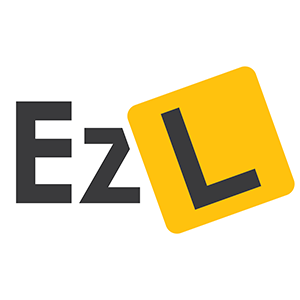9 Manual Driving Test Tips To Ace Your Test
Last updated 3 Nov 2025

Key Takeaways
- The article "9 Manual Driving Test Tips To Ace Your Test" by EzLicence provides comprehensive guidance for individuals preparing for a manual driving test. The key focus is on building confidence and mastering specific skills necessary for passing the test on the first attempt. The article outlines important tips and strategies, including understanding state-specific road rules, practicing around the test center, driving in various weather conditions, and focusing on essential maneuvers. It emphasises the importance of regular driving lessons with qualified instructors and encourages learners not to dwell on minor mistakes during the test. Additionally, it addresses common concerns about manual driving, such as stalling, and highlights the value of seeking clarification if needed during the test.
- Manual Driving Test Preparation:
- Familiarise yourself with state-specific road rules and regulations.
- Practice driving regularly around the test center to anticipate conditions.
- Gain experience in different weather conditions and traffic scenarios.
- Consistently observe, signal, and check mirrors while driving.
- Master key driving manoeuvers required by the test, like three-point turns and reverse parallel parking.
- Avoid getting caught up on minor mistakes; focus on recovery.
- Minimise stalling by managing the clutch and engine RPM effectively.
- Take regular lessons with qualified instructors for skill refinement and confidence building.
- Do not hesitate to ask for clarification during the test if instructions are unclear.
Whether you're a first-time manual learner or an automatic licence holder looking to upgrade to a manual driving licence, feeling confident before your manual driving test is key.
While the lead-up to the test can be nerve-wracking, we’ve rounded up the top 9 tips and tricks to prepare you well for the big day. That way, you can get your manual driving licence on the first go.
Tip 1: Know The Road Rules and Regulations In Your State
While Australia has national road safety laws, each state and territory has its own road rules, licensing conditions, and penalties. This can confuse those who are moving and need their interstate licence, so it’s essential to familiarise yourself with the road rules applicable to you to avoid getting caught out.
In particular, make sure to pay attention to:
- Speed limits
- Road signs
- Traffic laws
The manual driving test will also vary based on the different rules and regulations in each state.
For example, a driving test manoeuvre specific to Victoria’s practical driving test may be demonstrating that you can perform a hook turn successfully. In contrast, that same driving test manoeuvre wouldn’t be required for learners in NSW.
Tip 2: Practice Regularly Around The Test Centre
One of the best things you can do to develop confidence leading up to your manual driving test is to practice driving the route in and around your chosen test centre regularly. That way, you will be able to anticipate traffic conditions, navigate road configurations and know in advance which streets may contain more hazards.
This means that when it comes to test day, you will be prepared and ready for whichever route your driving test officer selects!
Tip 3: Practice In Different Weather Conditions
Another way you can ensure you are sufficiently prepared is by getting behind the wheel in different weather conditions.
Practice driving when it’s sunny, rainy and windy; in the daytime and during the evenings; in peak and off-peak traffic. This way, you’ll experience the full breadth of driving conditions and can be prepared for whatever weather test day holds.
Tip 4: Observe, Signal and Check Mirrors Often
One of the most common pitfalls for learners during their driver’s test is inadequate observation. Put simply, drivers fail to check their blind spots properly. This might be because they are busy focusing on changing gears, using the clutch correctly, or it might just occur because they are nervous.
You should be checking your mirrors every time you start your vehicle, switch gears, change or merge lanes, or approach any hazards. Don’t be afraid to make it obvious that you are checking your blind spots and mirrors, either! The more overt you are during your test, the easier it is for your test examiner to check it off.
Additionally, make sure to signal your intention to merge, change lanes or turn early on, as this is something test officers also look out for.
Finally, when you approach a stop sign, remember to come to a full stop for a minimum of three seconds. This is because rolling through is not only dangerous but also against the rules and will result in points being deducted.
Tip 5: Nail The Required Moves
Understanding what your manual driving test involves allows you to spend time mastering the required manoeuvres that are expected of you. These will differ by state, but often include making sure you can execute a:
- Three-point turn (NSW and WA)
- Hill start (NSW, VIC and QLD)
- Reverse parallel park (all states)
- Reverse in a straight line (NT and QLD)
Tip 6: Don’t Get Caught Up On Minor Mistakes
It's okay to keep mental notes of your mistakes during your practical test, but don’t stress or assume you’ll fail straight away. In reality, mistakes are broken up into different categories based on severity and the threat they pose. Hence, a mistake may be split into common brackets like “error” or “critical error”.
If you stall, for example, gather yourself, restart your vehicle and carry on, as this will most likely be marked as an "error."
There are a few mistakes, however, that will result in an “instant fail”, including asking your instructor to overlook your errors. What qualifies as an instant fail tends to vary by state, but usually involves performing dangerous or incredibly negligent actions on the road; ones that would harm the car’s occupants or others driving.
Tip 7: Avoid Behaviours That Cause Stalling
While car stalling won’t cost you your licence, it’s best to avoid it where possible so you can keep your cool.
More often than not, stalling occurs when the clutch is released too quickly or not used enough when slowing to a stop. However, your vehicle may still stall if your engine RPM drops too low.
To avoid this, take your time releasing or applying the clutch brake. Use it gradually and slowly when approaching intersections, roundabouts, hills, or any location that requires you to transition from a stationary position to accelerating quickly.
This is where manual driving lessons can pay off. Your driving instructor can help you work on slow-speed manoeuvres and gear changes before the test to make sure you have a smooth ride!
Tip 8: Have Regular Driving Lessons With Qualified Instructors
Having regular lessons with qualified instructors will not only help you rack up your learner’s hours more quickly, but can provide you with the knowledge and confidence you need to pass your manual driving test first go!
Experienced instructors can share valuable tips, correct any mistakes and help you refine your driving skills. They are also well-versed with the requirements of the driving test, and can advise you on what to focus on in the lead-up to it.
Visiting the test site with your instructor before you have to sit the assessment is also a great idea.
Tip 9: Don’t Be Afraid To Ask For Clarification
When you’re feeling nervous, it’s easy to miss instructions or misunderstand. If this happens during your test, don’t be afraid to ask your examiner to repeat the directions or clarify the request. Failure to follow instructions properly can lead to mistakes and penalties.
Ace Your Manual Driving Test With Driving Instructors on EzLicence
While the handy tips in this article can help kickstart your manual driving expertise, having a professional guide can greatly increase your chances of passing the driving test.
Fortunately, EzLicence provides a range of experienced driving instructors local to your area. You can peruse a selection of drivers with ease, comparing bios, photos, vehicle details, ratings, spoken languages, and so many more to find the right instructor for your needs.
Get started on perfecting your manual driving skills today by booking your first manual driving lesson.
FAQs
How do I prepare for the manual driving test?
To prepare for the manual driving test, you should:
- Know the road rules and regulations in your state
- Practice regularly around the test centre
- Practice in different weather conditions
- Observe, signal and check mirrors often
- Nail the required moves
- Don’t get caught up on minor mistakes
- Avoid behaviours that cause stalling
- Have regular driving lessons with a qualified instructor
- Don’t be afraid to ask for clarification
Is driving a manual car difficult?
While manual driving is more complex than operating an automatic vehicle, it’s achievable to master. This is sped up considerably with the help of manual driving lessons, which can guide you step by step through how to drive a manual car in:
- 10-15 hours for completely new drivers
- 7-10 hours for new drivers with some level of experience
- 3-6 hours for overseas licence holders
- 3-5 hours for refresher drivers or drivers who hold an automatic licence
Note that the above indicative hours can vary depending on your level of confidence and experience.
Can I drive manual with an automatic licence?
Whether you can drive a manual with an automatic licence will vary by Australian state. In NSW, for example, those who passed their driving test and received their P1 licence (red P’s) in an automatic car are legally bound to drive automatic until they pass their P2 (green P’s) licence. Then, to remove the restriction, drivers need to pass a manual driving test to update their licence.
Drivers can read through our guide to NSW road regulations for P-Platers for more details.

About the author
The EzLicence online platform brings transparency, choice and efficiency to booking and managing driving instructors and driving lessons in Sydney, Melbourne, Brisbane, Perth, Gold Coast and Sunshine Coast.